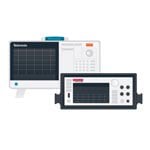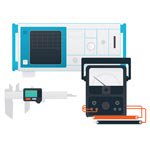Question :
How does an oscilloscope work?
Answer :
Modern digital oscilloscopes fall into one of three classes: digital storage oscilloscopes (DSO), digital phosphor oscilloscopes (DPO), and sampling oscilloscopes. All three have vertical, horizontal, acquisition, and triggering systems.
The vertical system is the entry point for the signals coming from the probe. It optimizes the amplitude of the incoming signal to the voltage range of the subsequent circuits, particularly the analog-to-digital converter ( ADC ). It should introduce no changes to the signal other than deliberate amplitude and offset adjustments.
The acquisition system encompasses the timebase (or horizontal) elements plus the actual digitizing and storage elements. It samples the signal voltage, acquiring numerous data points to display it. In a digital oscilloscope, the horizontal system contains the sample clock, which gives each voltage sample a precise time (horizontal) coordinate. The sample clock drives an analog-to-digital converter ( ADC ) whose output is stored in the acquisition memory. The capacity of this memory is known as the record length. Tremendous advancements in acquisition subsystem architecture have been made in the past few years, including breakthroughs such as DPX™ acquisition technology used in digital phosphor oscilloscopes.
The trigger system detects a user-specified condition in the incoming signal stream and applies it as a time reference in the waveform record. The event that met the trigger criteria is displayed, as is the waveform data preceding or following the event. In each case, the trigger event’s position in time can be observed. The trigger system ensures that a stable, consistent waveform will be displayed on the screen. The trigger system looks for voltage thresholds, pulse widths, logic combinations (on multiple inputs), and many other conditions to qualify an acquisition.
This FAQ Applies to:
No product series
Product:
FAQ ID 54156
View all FAQs »


